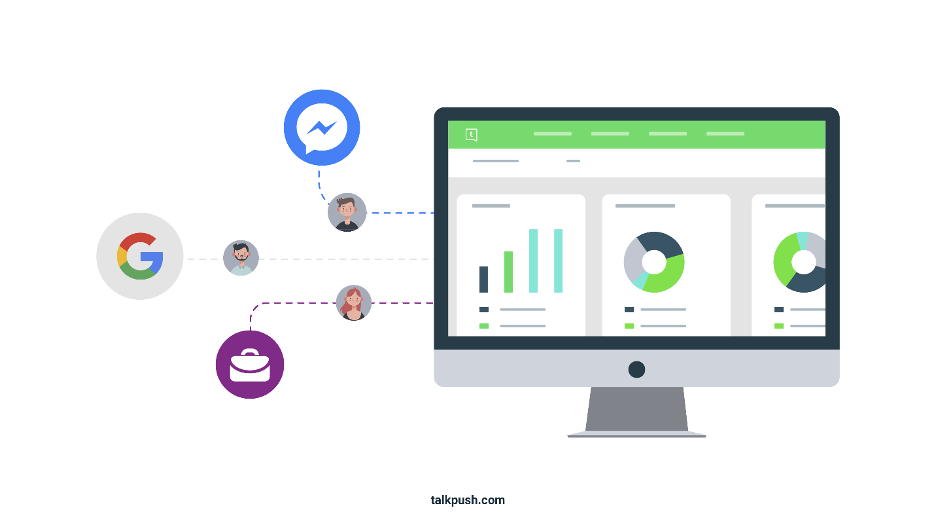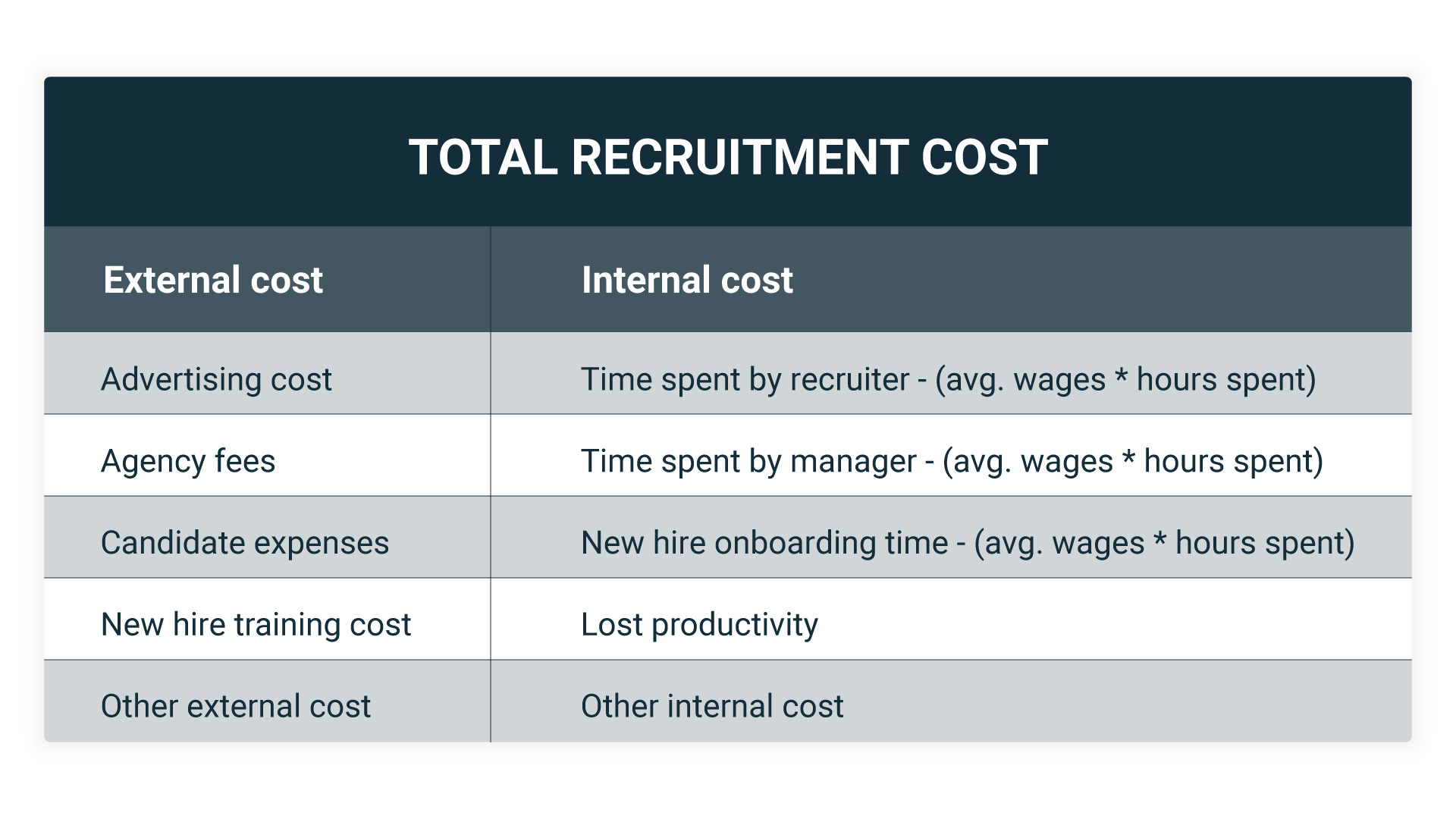Recruitment metrics provide valuable insights for optimizing your hiring processes especially when volume hiring and help you improve hiring results.
Volume hiring can be quite overwhelming for recruiters and it’s easy to lose track of the productivity of your recruitment processes. Recruitment metrics can help you measure the effectiveness of your recruitment efforts and help you decide which processes need to be optimized.
The right metrics can help you eliminate time-consuming processes, improve candidate experience, and reduce your hiring costs.
Table of Contents
The 15 Most Important Recruitment Metrics you Should Know in 2022
Speed Metrics
In today's recruitment climate, speed is essential. Candidates are becoming impatient with lengthy traditional recruitment processes and delays in communication.
So, we have compiled top speed-based metrics that can help you track how efficient your processes are and provide a brief understanding of the candidate experience.
1. Time to Fill
This metric counts the number of days from when a job opening is officially announced to when a candidate is hired. As of 2020, the global benchmark is 42 days but the average time to fill across industries ranges from 14 to 63 days.
It's an important metric because a shorter time to fill equals saved time! This can mean increased productivity and a lower cost per hire since less time is spent on each requisition.
So how do you stay ahead of the curve? Don't wait for candidates to come to you. Take advantage of social media to build viable talent pipelines. Then use a recruitment platform like Talkpush to centralize your sourcing efforts and automate your processes so that your team is equipped to handle 100x the application volume!
2. Time to Hire
It measures how long it takes to arrive at the hiring stage once a candidate has applied. The complexity of the application process plays a large factor, as the more complex the process is, the longer the metric is most likely to be. Currently, the global benchmark for time to hire across all industries is 26 days.
However, it's best to keep your time to hire at the shortest time possible for two main reasons.
First, the longer your process, the higher the chances of a decline in completion rate.
Second, you're opening yourself up for other companies with a shorter time to hire to beat you to the best candidates for the job.
The good news is that you can significantly cut down the time to hire to a week or two with Talkpush!
Interested?
Schedule a demo to go over your process and how Talkpush can automate 95% of it!
3. Time Spent per Stage
Depending on how your process is set up, if you're using a CRM like Talkpush for example, the campaign folders should be a good indication of what part of the process your candidates are currently in.
With that, you can keep an eye on the average time it takes for candidates to move forward in each of the recruitment stages. This allows you to identify opportunities to improve the recruitment process by spotting bottlenecks and addressing the areas where candidates experience unnecessary delays.
4. Time to Complete
The time to complete is not a standard recruitment metric as it can be difficult to gauge the time it takes for candidates to submit their applications. However, with Talkpush, you can track when the candidate begins and completes their application by undergoing the pre-screening interview.
With the widespread convenience of applying to multiple jobs at once with a smartphone, 20% of today's candidates won't spend more than 20 minutes on a single application.
Instead, candidates are selective of where they spend their time applying to. If the pre-screening takes more than five minutes to complete, a lot of candidates are likely to drop off immediately.
Thus, the time to complete an application affects the completion rate and sets the tone for the candidate experience.
Conversion Metrics
Speed is half the battle, you also need to produce quantifiable results.
These results primarily can be in form of total leads and conversion percentages.
5. Application Completion Rate
Similar to the Time to Complete metric, the Application Completion rate focuses on the number of candidates who have (or have not!) completed their application at the beginning of the process. This metric is particularly interesting because a low completion rate immediately raises red flags of a possible blocker issue that is preventing candidates from proceeding with their application.
The issues could vary from a simple fix like the interface not being user-friendly enough or something more complex like an incompatibility with the system and the candidate's web browser.
However, if there's no observable issue that is preventing candidates from applying and yet the completion rate is still low, the problem may be with the actual application form. If it contains more than 25 questions (which should really be more than enough), candidates are likely to abandon their application mid-process.
6. Recruitment Funnel Effectiveness
A recruitment funnel begins from sourcing and ends with a signed contract. So the natural flow is that the number of candidates still in the running should decrease in each stage.
However, you want to ensure that it is not a drastic decrease from one stage to the next as it could signify a significant drop-off rate. 
Therefore, this metric measures the yield of candidates per recruitment stage and allows you to gauge at what part of the recruitment process candidates are losing interest in.
7. Applications per Channel
The applications per channel pertain to the total number of applications sent from each sourcing channel and determine the popularity of the job posting. A large number of applications on a single posting is not always a good sign, it could mean that there is a high demand for that line of work among job seekers, BUT it could also point out that the job description is too general.
By narrowing down the job description and including a few "hard" criteria, the total number of applications should decrease without reducing the number of qualified leads. However, if the number of applications per job posting is low, this could signify that you are using the wrong sourcing channel to attract your intended talent.
8. Sourcing Channel Effectiveness
Sourcing Channel Effectiveness can be derived from the total number of hires you're getting from each of your sourcing channels. Typically these are:
-
Internal candidates (internal promotions)
-
Referral programs (Employee, Applicant, and Network Referrals)
-
Career site/landing page
-
Candidate database/Talent Pipeline
-
Social media (LinkedIn, Facebook, Instagram, etc.)
-
Job boards (Indeed, Jobstreet, etc.)
PageUp research shows that more than half of total applications are sourced from job boards, but only 17% of these applications are converted to hires.
Meanwhile, applications from a company's own talent pool comprise only 2% of the total number of applications, but account for 22% of a company's overall hires.
This means that re-engaging with your existing talent pipeline is 34X more effective than job boards in producing successful hires.
Don't worry though, re-engaging with these candidates doesn't have to be tedious work thanks to bulk and automated messaging on the Talkpush CRM.
9. Offer Acceptance Rate
Put simply, the offer acceptance rate is a side-by-side comparison of candidates who have accepted the job offer versus the total who have received job offers.
A low acceptance rate could suggest potential compensation problems — try discussing the salary earlier on in the recruitment process to minimize the number of refusals during the job offer.
Though this is an unlikely scenario as the benchmark acceptance rate across all industries is 95%. If your acceptance rate is less than that, it's time to think about transparency, clear communication of benefits, and setting expectations from day 1.
10. Selection Ratio
The Selection Ratio is also known as the Submittals to Hire Ratio and Applicant per Hire Rate.
It's used to compare the number of hired candidates compared to the total number of candidates who applied.
Quality Metrics
Quality-based metrics ensure that the company is getting its money's worth. This involves reviewing the resources (money) invested in the recruitment process to yield quality candidates and competent new hires.
11. Candidate Experience
The candidate experience metric tries to put numbers on how your candidates view your hiring process, employer brand and the chances they'll refer other candidates to you.
Typically it’s measured through Net Promoter Score (NPS) which you can collect by asking your candidates once they’ve completed their application about quality, speed, and communication, using a one to ten rating, or 1-5 stars, or smiley faces, your choice. :)
Some examples:
-
Would you apply again to another similarly suitable role with our company?
-
How likely are you to recommend us to a friend?
-
How was the quality of your [phone screening, interview, assessment]?
-
Can you rate the communication of our hiring team?
12. Sourcing Channel Cost

Basically, this metric aims to pin point how much each hire costs within each channel. The formula is simple, just divide the ad spend per platform by the number of hired candidates.
It’s super important to stay on top of this one, since you could be losing out on some $$$ without knowing it, if certain channels are producing leads, but not enough qualified ones.
13. Quality of Hire
This is typically measured with performance ratings during a new hire’s first year. It’s important because a bad hire can cost over a 10k investment.
In high volume it’s especially important because it can help TA teams spot trends to avoid in their hiring process, flag unqualified candidates earlier, and streamline the process.
But, a single bad hire does not a broken recruitment process make.
Instead focus on keeping your success ratio (the number of hires who perform well divided by the total number of candidates hired) high! A low one, points to a larger problem in your selection process.
14. Retention Rate
Also known as the first-year attrition rate, tells you the rate at which candidates stay longer than their first year. Now, in some industries like BPO and retail, a low retention rate isn’t much cause for alarm — due to seasonal hires, part-time work, and the high turnover rates that characterize the industry.
However, it’s important to note what retention rate is normal for your industry and make sure it doesn’t go below that.
You can increase retention rates in high volume with transparency at the beginning of the process. When a candidate quits, it’s often an indicator of unrealistic expectations; like a mismatch between the job description and the actual job.
15. Cost per Hire:
Last, but absolutely not least, one of the most important metrics of all, your total recruitment cost divided by the total number of hires.
This isn’t just ad spend, or job board subscriptions, it’s the cost everything. Recruiter time, marketing, the training/onboarding period. It’s crucial TA teams are aware how much each hire is costing the business, so they can make informed budget decisions on what’s working and what isn’t. 
Using Recruitment Metrics to Set and Track Key Performance Indicators
KPIs and recruitment metrics are not the same, but one can be an indicator of the other.
KPIs are goals recruitment teams set early on according to business needs and past performance, while recruitment metrics can help Talent Acquisition teams know if they're hitting their KPIs.
Usually, top recruiters and their managers go about setting ambitious goals to improve their hiring process, like reducing time to fill, or increasing candidate satisfaction.
Now, KPIs look at the whole picture, what actions need to be taken to achieve these goals, while the metrics are just a way to measure them.
For example: Let's say Recruiter Team A has an ambitious KPI to close their time to fill by 50% in the next six months.
To do that, they'll need to look at their overall process, spot gaps that can be closed, improve other metrics like completion rates, and average application time.
But the "Time to Fill" metric will be the biggest indicator on whether they were successful or not.
Pro tip: Make your KPIS ambitious (but realistic) Achieving 100% means you didn't aim high enough, but on the flip side, creating unattainable goals can be demoralizing and counterproductive.
Measuring Recruitment Marketing Campaign Performance
Talkpush users can view how each campaign is performing, as well as each specific portion of the funnel.
For example, they may check how many leads are in the inbox folder vs. the shortlisted one, or how many candidates end up being shortlisted from specific job boards, or how many candidates are hired vs. rejected by sourcing platform.
In Talkpush, recruiters can get these graphics at a glance:
-
Timeline with number of unique applications per stages of the funnel
-
Source tracking: where are leads coming from and which folder do they end up in? (e.g. are 80% of Facebook leads end in the 'pass' folder?)
If you're running paid ads for open requisitions, keep an eye on:
-
Cost per Lead: How much money you spent divided by the total number of applicants - how many people filled out (completed) an application.
-
Cost per Qualified Candidate: How much money you spent, vs how many *qualified* people filled out the application. This number tends to be higher than the Cost per Candidate, since you're looking deeper to determine how effective your campaign was, instead of looking at sheer number of leads, you're looking at the number of leads that serve your needs.
-
Marketing Cost per Hire: This is the ultimate metric! To determine how effective your campaign was, you'll need to know how much money you invested to get each hire. Just divide the total cost of the campaign, by the number of candidates you hired that applied through that specific ad campaign.
How to get better data from Talkpush Analytics 🤝
Each time you hire a new team member, move them to the Hired Folder to complete the application process in Talkpush and gather measurable data for your team.
Just like this:

You'll have solid data ready to present! 🙌
4 Benefits of moving Candidates to the Hired Folder
Own your data. 👩💻
Leaving your new hires on the completed or shortlisted folder signifies losing a significant portion of your recruitment metrics; specifically your conversion rate. Lacking these rates will make it harder to track your hiring objectives.
Knowing your real hiring rate will allow you to see past bottlenecks and help you determine if any process needs to be modified—for example, time to hire, source of hire, application completion rate etc. Which, in time, will contribute to a more significant ROI and Business Reviews based on quantified facts.
Keep your leads engaged. 💚
Remember those A and B players who didn't make it? They were all excellent options and might just be looking for a job opportunity on your next recruiting spree. Wouldn't you like to keep in touch with them and reach out whenever you need them?
If you place these potential hires on the correct folders, you can tap into your database anytime to reach out and maintain good relationships with them. As a result, you'll be able to fill slots quicker and use fewer resources on future recruiting processes. All the while strengthening your external image and perhaps even gaining some brand ambassadors.
Keeping your hires in miscellaneous leads folders and sending chasing/engagement messages to them would be a tad weird, just saying.
Take Onboarding to the next level. 👋
You can take your hiring to the next level by managing your hires with our Onboarding Solution. Create workflows specifically designed for new hires to have a fantastic start in their new position. How are you going to target your new hires if they are floating around Talkpush's folders?
Knowing what worked and what didn't in the onboarding phase will leave learnings for future processes to shape and transform the way you recruit and onboard, to create remarkable candidate journeys.
Step up your marketing game. 💸
You want marketing to increase your company's hiring performance, don't you? Well, it is possible with the help of accurate data. This empowers marketers and strategic minds to review the efficiency of the current marketing strategies and plans based on past results, such as:
-
The number of candidates who applied to a specific position.
-
What source your candidates come from, and which source drives the most successful profiles to your company.
-
What stage of the process your candidates ended their journey, and how long it took to process them.
There might be a pattern you're missing, thus driving your company to spend cash on bad-performing sources and miss out on other winning opportunities.
Recruitment Metrics FAQs
-
How are recruitment metrics calculated?
Recruitment metrics are usually calculated by dividing costs incurred by number of applicants, hires, and the like. They can also be calculated per stage, hours spent, and overall time that it takes to fill a position. Most CRMs and ATS offer some sort of analytics, Talkpush's embedded analytics dashboard allows recruiters to drill down on specific data points to get as specific as they want, without the dreaded import and export of excel sheets.
-
Why are metrics important in recruitment?
Recruitment metrics are important because they offer recruiters information about their candidates, the effectiveness of their process, and allow them to make changes accordingly. However, it's not just the numbers that are important, knowing how to read them and what steps to take to improve them is just as important.
-
What are some metrics for measuring the success of a recruitment campaign?
Recruitment campaign success can be measured by cost of qualified candidates and the marketing cost per hire. The lower the spend, and the better the candidate the more successful your campaign.
Ready to take those metrics all the way up? 🚀





